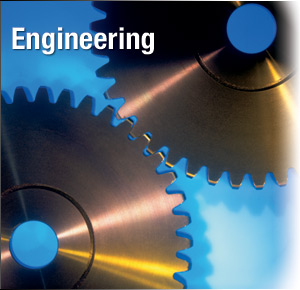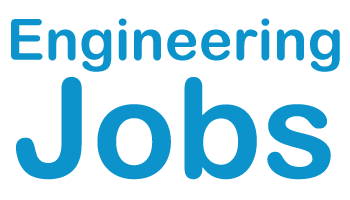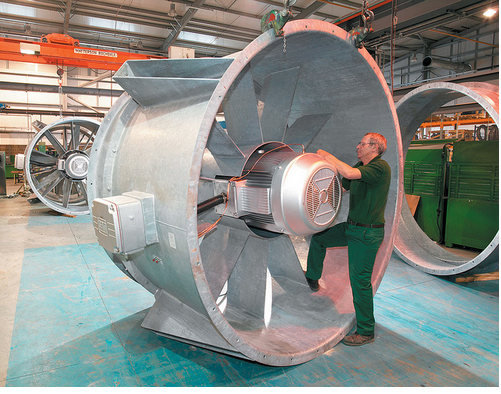Source:- Google.com.pk
Engineering job (from Latin ingenium, meaning "cleverness" and ingeniare, meaning "to contrive, devise") is the application of scientific, economic, social, and practical knowledge in order to invent, design, build, maintain, and improve structures, machines, devices, systems, materials and processes. The discipline of engineering is extremely broad, and encompasses a range of more specialized fields of engineering, each with a more specific emphasis on particular areas of applied science, technology and types of application.
The American Engineers' Council for Professional Development (ECPD, the predecessor of ABET) has defined "engineering" as:
The creative application of scientific principles to design or develop structures, machines, apparatus, or manufacturing processes, or works utilizing them singly or in combination; or to construct or operate the same with full cognizance of their design; or to forecast their behavior under specific operating conditions; all as respects an intended function, economics of operation or safety to life and property.
One who practices engineering is called an engineer, and those licensed to do so may have more formal designations such as Professional Engineer, Designated Engineering Representative, Chartered Engineer, Incorporated Engineer, Ingenieur or European Engineer.
Engineering job has existed since ancient times as humans devised fundamental inventions such as the pulley, lever, and wheel. Each of these inventions is consistent with the modern definition of engineering, exploiting basic mechanical principles to develop useful tools and objects.
The term engineering itself has a much more recent etymology, deriving from the word engineer, which itself dates back to 1300, when an engine'er (literally, one who operates an engine) originally referred to "a constructor of military engines." In this context, now obsolete, an "engine" referred to a military machine, i.e., a mechanical contraption used in war (for example, a catapult). Notable examples of the obsolete usage which have survived to the present day are military engineering corps, e.g., the U.S. Army Corps of Engineers.
The word "engine" itself is of even older origin, ultimately deriving from the Latin ingenium (c. 1250), meaning "innate quality, especially mental power, hence a clever invention."
Later, as the design of civilian structures such as bridges and buildings matured as a technical discipline, the term civil engineering[3] entered the lexicon as a way to distinguish between those specializing in the construction of such non-military projects and those involved in the older discipline of military engineering.
Ancient era
The Ancient Romans built aqueducts to bring a steady supply of clean fresh water to cities and towns in the empire.
The Pharos of Alexandria, the pyramids in Egypt, the Hanging Gardens of Babylon, the Acropolis and the Parthenon in Greece, the Roman aqueducts, Via Appia and the Colosseum, Teotihuacán and the cities and pyramids of the Mayan, Inca and Aztec Empires, the Great Wall of China, the Brihadeeswarar Temple of Thanjavur and tombs of India, among many others, stand as a testament to the ingenuity and skill of the ancient civil and military engineers.
The earliest civil engineer known by name is Imhotep. As one of the officials of the Pharaoh, Djosèr, he probably designed and supervised the construction of the Pyramid of Djoser (the Step Pyramid) at Saqqara in Egypt around 2630-2611 BC.
Ancient Greece developed machines in both civilian and military domains. The Antikythera mechanism, the first known mechanical computer, and the mechanical inventions of Archimedes are examples of early mechanical engineering. Some of Archimedes' inventions as well as the Antikythera mechanism required sophisticated knowledge of differential gearing or epicyclic gearing, two key principles in machine theory that helped design the gear trains of the Industrial Revolution, and are still widely used today in diverse fields such as robotics and automotive engineering.
Chinese, Greek and Roman armies employed complex military machines and inventions such as artillery which was developed by the Greeks around the 4th century B.C., the trireme, the ballista and the catapult. In the Middle Ages, the trebuchet was developed.
Renaissance era
The first electrical engineer is considered to be William Gilbert, with his 1600 publication of De Magnete, who coined the term "electricity".
The first steam engine was built in 1698 by mechanical engineer Thomas Savery.[12] The development of this device gave rise to the Industrial Revolution in the coming decades, allowing for the beginnings of mass production.
With the rise of engineering as a profession in the 18th century, the term became more narrowly applied to fields in which mathematics and science were applied to these ends. Similarly, in addition to military and civil engineering the fields then known as the mechanic arts became incorporated into engineering.
Modern era
The International Space Station represents a modern engineering challenge from many disciplines.
Boeing 747-8 wing-fuselage sections during final assembly
The early stages of electrical engineering included the experiments of Alessandro Volta in the 1800s, the experiments of Michael Faraday, Georg Ohm and others and the invention of the electric motor in 1872. The work of James Maxwell and Heinrich Hertz in the late 19th century gave rise to the field of electronics. The later inventions of the vacuum tube and the transistor further accelerated the development of electronics to such an extent that electrical and electronics engineers currently outnumber their colleagues of any other engineering specialty.
The inventions of Thomas Savery and the Scottish engineer James Watt gave rise to modern mechanical engineering. The development of specialized machines and their maintenance tools during the industrial revolution led to the rapid growth of mechanical engineering both in its birthplace Britain and abroad.
A visual example of a 24 satellite GPS constellation in motion with the Earth rotating. Notice how the number of satellites in view from a given point on the Earth's surface, in this example at 45°N, changes with time.
John Smeaton was the first self-proclaimed civil engineer, and is often regarded as the "father" of civil engineering. He was an English civil engineer responsible for the design of bridges, canals, harbours and lighthouses. He was also a capable mechanical engineer and an eminent physicist. Smeaton designed the third Eddystone Lighthouse (1755–59) where he pioneered the use of 'hydraulic lime' (a form of mortar which will set under water) and developed a technique involving dovetailed blocks of granite in the building of the lighthouse. His lighthouse remained in use until 1877 and was dismantled and partially rebuilt at Plymouth Hoe where it is known as Smeaton's Tower. He is important in the history, rediscovery of, and development of modern cement, because he identified the compositional requirements needed to obtain "hydraulicity" in lime; work which led ultimately to the invention of Portland cement.
Chemical engineering, like its counterpart mechanical engineering, developed in the nineteenth century during the Industrial Revolution. Industrial scale manufacturing demanded new materials and new processes and by 1880 the need for large scale production of chemicals was such that a new industry was created, dedicated to the development and large scale manufacturing of chemicals in new industrial plants. The role of the chemical engineer was the design of these chemical plants and processes.
Aeronautical engineering deals with aircraft design while aerospace engineering is a more modern term that expands the reach of the discipline by including spacecraft design. Its origins can be traced back to the aviation pioneers around the start of the 20th century although the work of Sir George Cayley has recently been dated as being from the last decade of the 18th century. Early knowledge of aeronautical engineering was largely empirical with some concepts and skills imported from other branches of engineering.
The first PhD in engineering (technically, applied science and engineering) awarded in the United States went to Josiah Willard Gibbs at Yale University in 1863; it was also the second PhD awarded in science in the U.S.
Only a decade after the successful flights by the Wright brothers, there was extensive development of aeronautical engineering through development of military aircraft that were used in World War I . Meanwhile, research to provide fundamental background science continued by combining theoretical physics with experiments.
In 1990, with the rise of computer technology, the first search engine was built by computer engineer Alan Emtage.
Main branches of engineering
This section needs additional citations for verification. Please help improve this article by adding citations to reliable sources. Unsourced material may be challenged and removed. (August 2013)
Main article: List of engineering branches
Hoover Dam
Engineering is a broad discipline which is often broken down into several sub-disciplines. These disciplines concern themselves with differing areas of engineering work. Although initially an engineer will usually be trained in a specific discipline, throughout an engineer's career the engineer may become multi-disciplined, having worked in several of the outlined areas. Engineering is often characterized as having four main branches:
Chemical engineering – The application of physics, chemistry, biology, and engineering principles in order to carry out chemical processes on a commercial scale, such as petroleum refining, microfabrication, fermentation, and biomolecule production.
Civil engineering – The design and construction of public and private works, such as infrastructure (airports, roads, railways, water supply and treatment etc.), bridges, dams, and buildings.
Electrical engineering – The design and study of various electrical and electronic systems, such as electrical circuits, generators, motors, electromagnetic/electromechanical devices, electronic devices, electronic circuits, optical fibers, optoelectronic devices, computer systems, telecommunications, instrumentation, controls, and electronics.
Mechanical engineering – The design of physical or mechanical systems, such as power and energy systems, aerospace/aircraft products, weapon systems, transportation products, engines, compressors, powertrains, kinematic chains, vacuum technology, and vibration isolation equipment.
The design of a modern auditorium involves many branches of engineering, including acoustics, architecture and civil engineering.
Beyond these four, sources vary on other main branches. Historically, naval engineering and mining engineering were major branches. Modern fields sometimes included as major branches include manufacturing engineering, acoustical engineering, corrosion engineering, Instrumentation and control, aerospace, automotive, computer, electronic, petroleum, systems, audio, software, architectural, agricultural, biosystems, biomedical,[18] geological, textile, industrial, materials, and nuclear engineering. These and other branches of engineering are represented in the 36 institutions forming the membership of the UK Engineering Council.
New specialties sometimes combine with the traditional fields and form new branches - for example Earth Systems Engineering and Management involves a wide range of subject areas including anthropology, engineering, environmental science, ethics and philosophy. A new or emerging area of application will commonly be defined temporarily as a permutation or subset of existing disciplines; there is often gray area as to when a given sub-field becomes large and/or prominent enough to warrant classification as a new "branch." One key indicator of such emergence is when major universities start establishing departments and programs in the new field.
For each of these fields there exists considerable overlap, especially in the areas of the application of sciences to their disciplines such as physics, chemistry and mathematics.
Engineering Jobs Job Application Resume Application Letter Interview Description Application Form Resume Samples Search Cover Letter
Engineering Jobs Job Application Resume Application Letter Interview Description Application Form Resume Samples Search Cover Letter
Engineering Jobs Job Application Resume Application Letter Interview Description Application Form Resume Samples Search Cover Letter
Engineering Jobs Job Application Resume Application Letter Interview Description Application Form Resume Samples Search Cover Letter
Engineering Jobs Job Application Resume Application Letter Interview Description Application Form Resume Samples Search Cover Letter
Engineering Jobs Job Application Resume Application Letter Interview Description Application Form Resume Samples Search Cover Letter
Engineering Jobs Job Application Resume Application Letter Interview Description Application Form Resume Samples Search Cover Letter
Engineering Jobs Job Application Resume Application Letter Interview Description Application Form Resume Samples Search Cover Letter
Engineering Jobs Job Application Resume Application Letter Interview Description Application Form Resume Samples Search Cover Letter
Engineering Jobs Job Application Resume Application Letter Interview Description Application Form Resume Samples Search Cover Letter
Engineering Jobs Job Application Resume Application Letter Interview Description Application Form Resume Samples Search Cover Letter
Engineering Jobs Job Application Resume Application Letter Interview Description Application Form Resume Samples Search Cover Letter
Engineering Jobs Job Application Resume Application Letter Interview Description Application Form Resume Samples Search Cover Letter
Engineering Jobs Job Application Resume Application Letter Interview Description Application Form Resume Samples Search Cover Letter
Engineering Jobs Job Application Resume Application Letter Interview Description Application Form Resume Samples Search Cover Letter
Engineering Jobs Job Application Resume Application Letter Interview Description Application Form Resume Samples Search Cover Letter
Engineering Jobs Job Application Resume Application Letter Interview Description Application Form Resume Samples Search Cover Letter















No comments:
Post a Comment